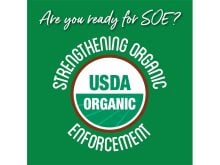China is field testing 20 new high oil rapeseed varieties, a development some feel could eventually disrupt Canadian canola sales to that important destination.
The new rapeseed lines reportedly contain 55 to 60 percent oil content compared to the Canadian average of 43.5 percent. They are expected to increase China’s oil output by 30 percent per acre, which would be the equivalent of adding five million acres of rapeseed.
“Maybe it would reduce their import requirements thereby affecting our markets,” said Wilf Keller, president of Genome Prairie, an organization that supports agricultural genomics research.
Read Also

U.S. bill could keep out Canadian truckers
The Protecting America’s Roads Act, which was tabled in the U.S. House of Representatives at the beginning of October, would “rid the country of illegal immigrant commercial truck drivers and ineligible foreign nationals.”
Dave Hickling, vice-president of canola utilization at the Canola Council of Canada, isn’t overly concerned about reduced sales to China, a market that is on pace to buy in excess of two million tonnes of canola from Canada this year.
“Even if they do produce a higher oil canola, they’re still going to need imports,” he said.
China’s reliance on oil imports has increased to 60 percent from 40 percent five years ago as the country struggles to meet soaring demand for vegetable oil, so the sales outlook is encouraging.
The country’s current rapeseed lines have about 38 percent oil content, which is why crushers like Canadian product.
Keller is aware of new Chinese lines containing 53 to 55 percent oil but has not heard of any in the 60 percent range.
The new varieties are at least five years away from commercialization.
“The lines that have the 55 percent are poor yielding and they have poor agronomic traits. You have to cross those extensively and backcross to try and bring that feature into other lines,” he said.
Canadian breeders are also working on developing higher oil canola varieties. The National Research Council of Canada’s Plant Biotechnology Institute has formed an alliance with China’s Oil Crops Research Institute to exchange canola germplasm.
But work on developing high oil canola lines in Canada has been slow despite estimates that a one percent increase in average oil content would result in an extra $70 million in processing revenue, according to the Canola Council.
“One of the reasons why this hasn’t moved as quickly as it should is that producers are not paid on oil content. They are paid by bushels per acre,” said Keller.
“If we could pay based on oil content I think we’d see stronger and quicker movement in that area.”
Hickling said it is inaccurate to suggest farmers are not paid for higher oil content. Some crushers do pay a premium. And in years where the oil content is particularly high, it can be reflected in prices paid to growers. But he concedes there is not a clear, industry-wide signal to grow higher oil content.
Growers in Australia and Europe receive premiums for high oil content but Canada’s collection system is more dispersed and processors worry about the administrative and equipment costs of implementing testing throughout the system. They are also skeptical about the accuracy of the equipment.
The council’s board of directors has discussed the issue at length and is awaiting the results of two research projects before it makes any decision on implementing an oil premium.
The first project looks at the accuracy of testing equipment and the feasibility of doing quick oil content tests at elevators.
The second is a study to see how much oil content can be influenced through breeding.
There is also a stipulation that any new canola varieties registered in Canada must have 0.3 percent higher oil content than check varieties, which will help the industry achieve its goal of 45 percent average oil content in the crop by 2015.
Hickling said an industry-wide premium would likely encourage farmers to grow more high oil content varieties but getting everybody on the same page is a long process.

















